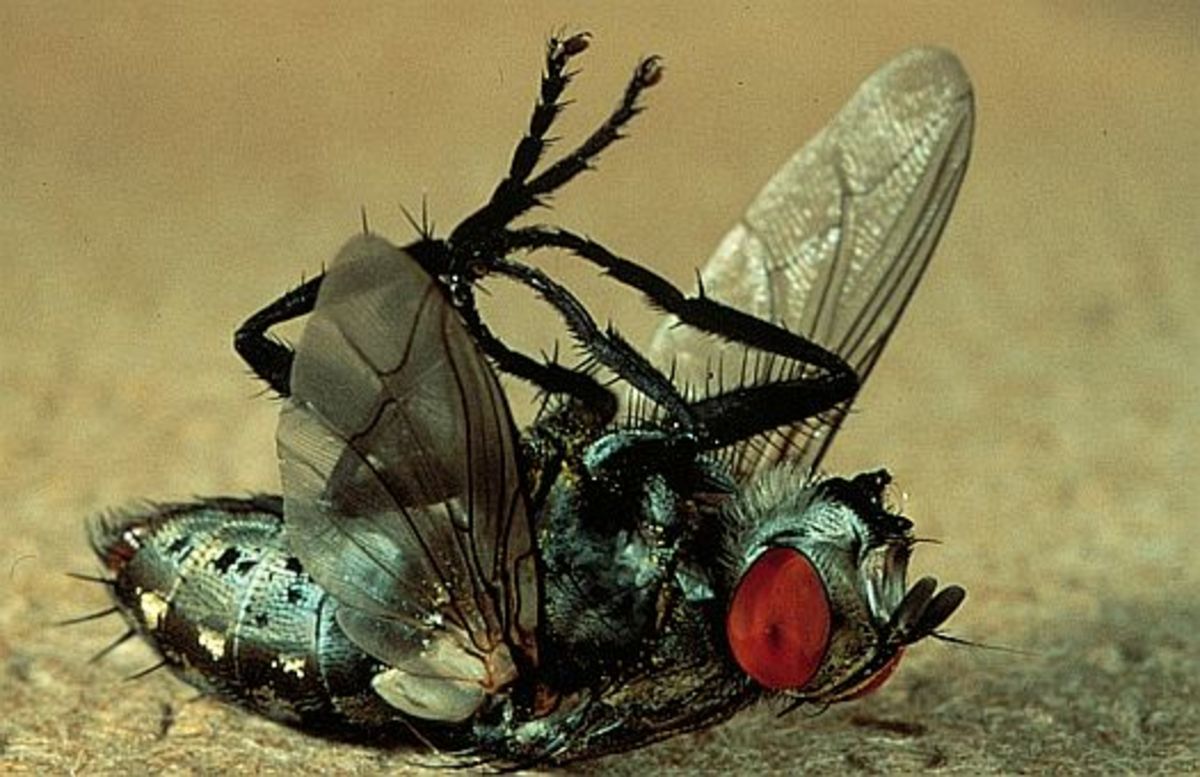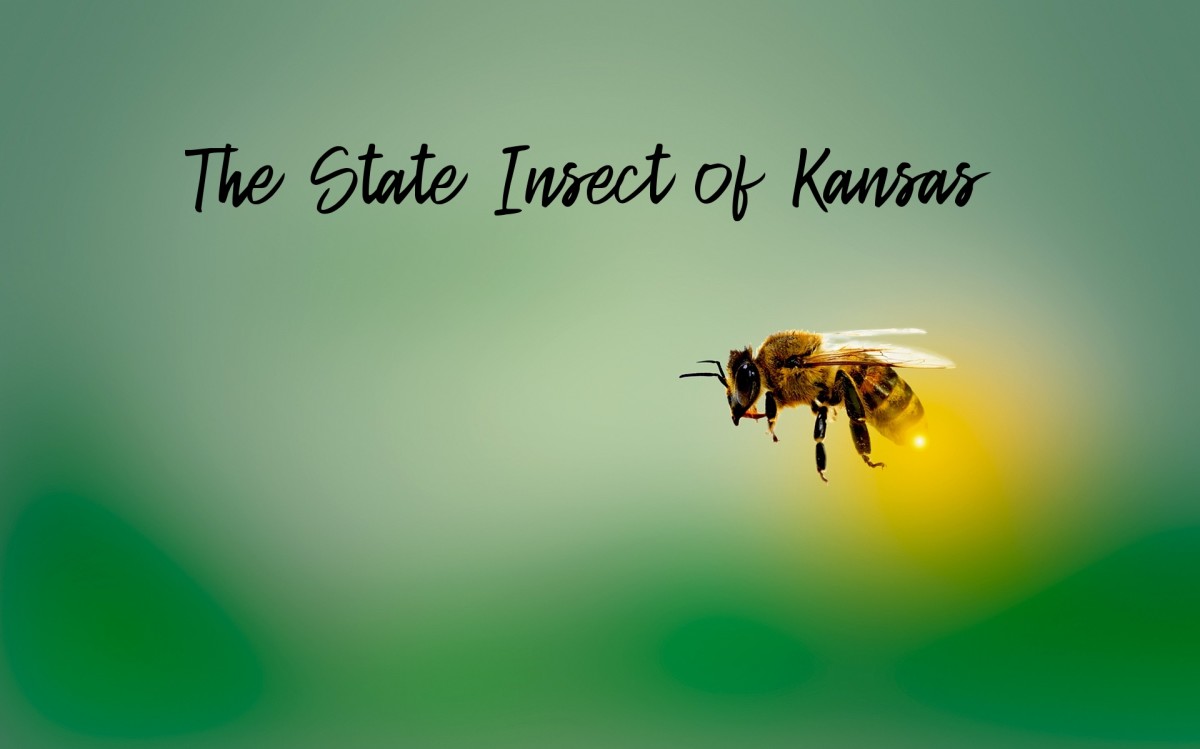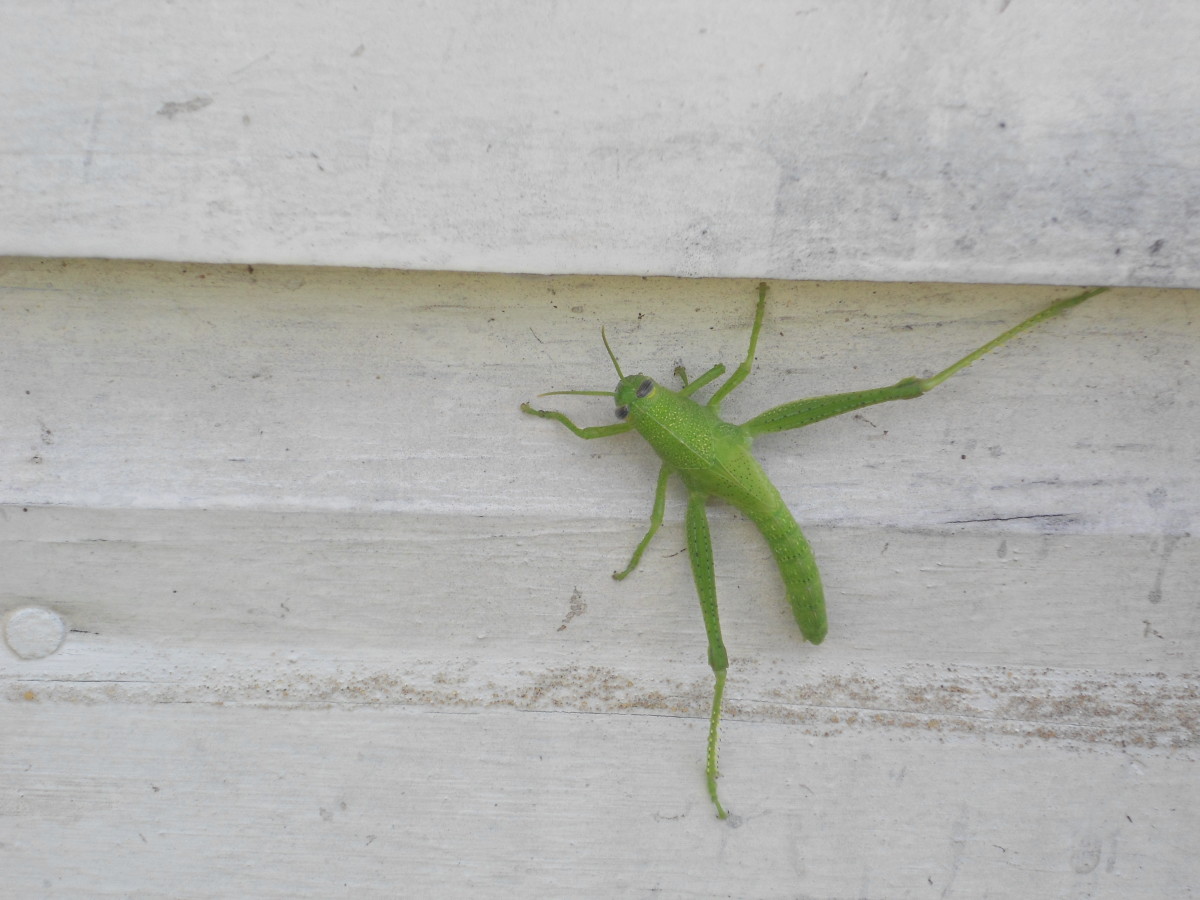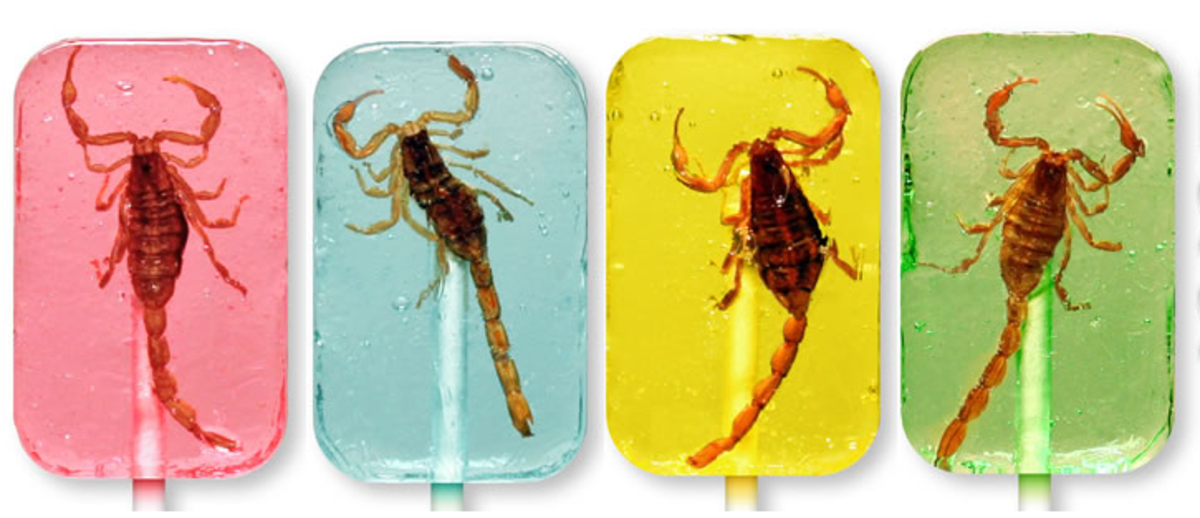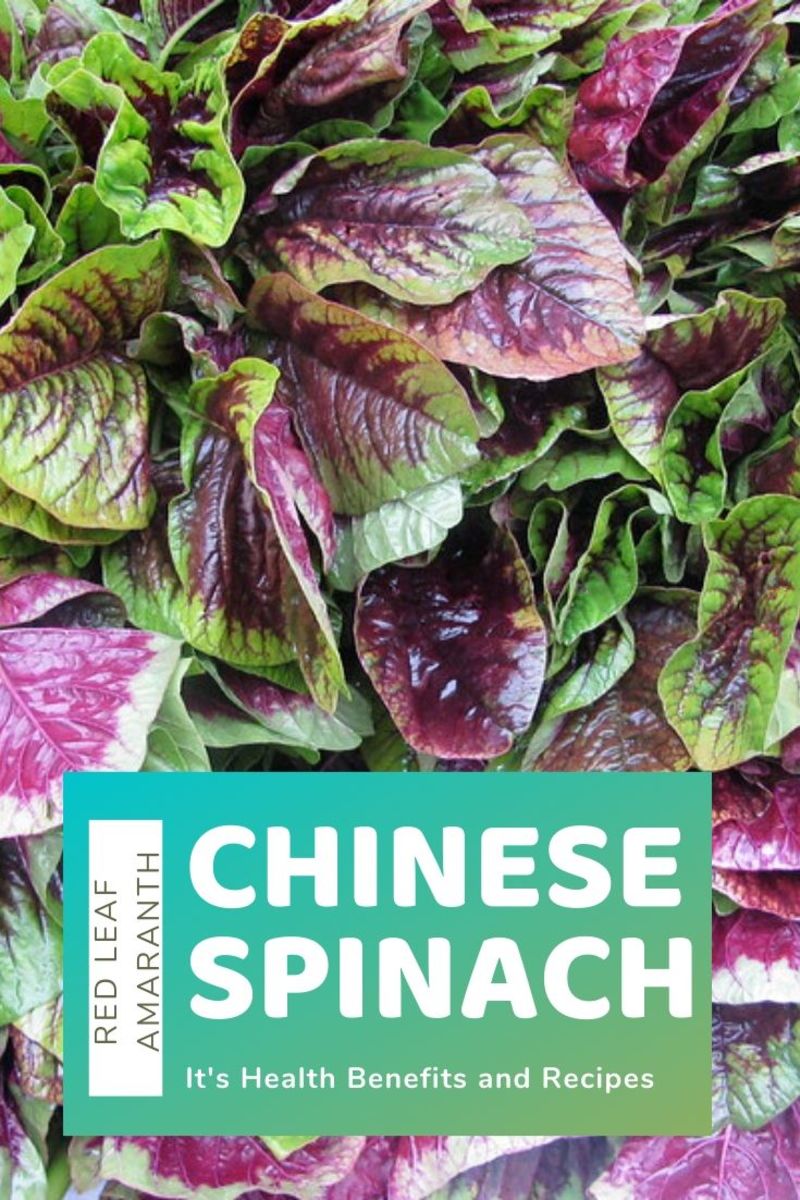Insects as Food
Insects and bugs are captured and eaten as food in Asia
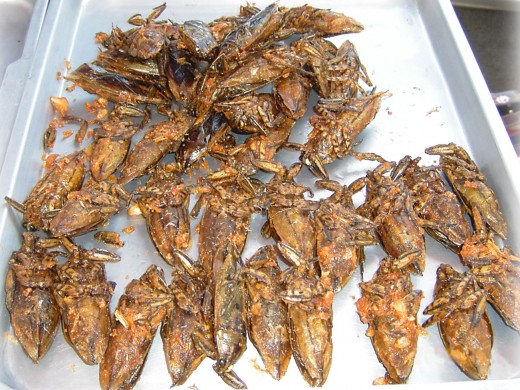
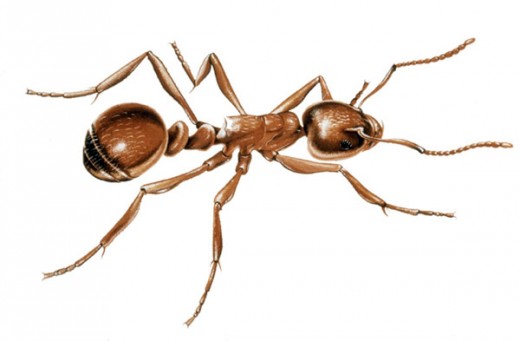
Many People Around the World See Ant Grubs, Crickets, Mealworms and Grasshoppers as Delicacies
In the developed world, most people would just about retch or hurl at the idea of eating a bug. But in many parts of the world, insects of many kinds are relished and sought after as a food item in the diet, even a mainstay. By now, everyone has heard that old joke; “Waiter; what's that fly doing in my soup?” Waiter: “The backstroke sir!” But think about it for a moment, every single person has eaten bugs in their lives, usually unwittingly. During summer swarms, tiny bugs are often aspirated and swallowed inadvertently. We may try to spit them up, but it goes down anyway and then we wait to get sick, but stay healthy regardless. Sometimes during fruit fly season, we might eat one or more on a slice of fruit without realizing it. During our sleep, bugs like spiders may crawl too far into our noses and then get swallowed in our state of unconsciousness. The there is the song “I know and old lady who swallowed a fly”. When you think of it, most of the visible biomass in the world is in the form of insects. Some locust swarms, such as a recent event in Australia (1,2) span an area that is equivalent to a small US state. The air up to the high stratosphere, the ground under our feet and the oceans teem with tens of quintillions (10^18) of these creatures (3). Most are tiny and a few are behemoths of the insect world. 95 percent of all animal life on earth is insect in form.
Insects are so plentiful, that in many parts of the world, they are considered a viable food source. During midge season in some parts of Africa, swarms hatch from nymphs in the water and rise slowly up into the atmosphere. In the process, African children fan the air with oiled pans catching them in the hundreds of thousands, forming a thick mat on the pan surface. These are made into a paste and lightly fried and eaten like flat bread. In the developed world, we think nothing about eating honey and even domesticate bees for the process of harvesting honey. Honey is regurgitated by the bees for their young to grow on and depending on what is needed in the hive, they will alter the formula to produce workers or queens. So in effect, eating honey is devouring bee vomit. This may turn some peoples stomachs, but most could not care less as worse things wind up inside them.
In the Bible we read that John the Baptist lived on locusts and wild honey. Though some sources suggest that the term locust actually refers to the pod of the carob tree, most people who read the passage think of the grasshopper like insect that devours a huge part of the food crop on an annual basis. Locusts are a periodic phenomenon and when they merge into a super swarm, they can denude an entire landscape in mere hours, leaving famine and mass death in their wake. With a little creativity, these swarms can be then captured and eaten, so the loss is not total. Instead, we often like to use pesticides that poison everything.
In the northern outback and forests of Europe, Russia and Canada, parasitic insects like deer flies, horseflies, mosquitoes and black-flies mass in such swarms that they have been known to drive entire herds of elk and deer insane in a bid to escape them. During the Stalin era in Russia in Siberia, stripping a prisoner naked and allowing him to be devoured by mosquitoes was a form of torture. Mosquitoes were in such abundance during the short summer that they could cover a person so that they appeared black from a distance. This is a lot of bugs. Even a few mosquitoes is disconcerting for most campers. And yet, mosquitoes are vegetarian except for that time when females are impregnated and need protein for their eggs. Mosquitoes still plague most of the world and there is no immediate solution. This minutely defines the scope of the insect population. Some people to solve food woes have taken to eat the young larvae and even the adults. We have all heard of chocolate covered ants as a delicacy, but that is only scratching the surface.
Watch as these people cook and eat bugs
Crickets are easily availble and easy for raising as a food source
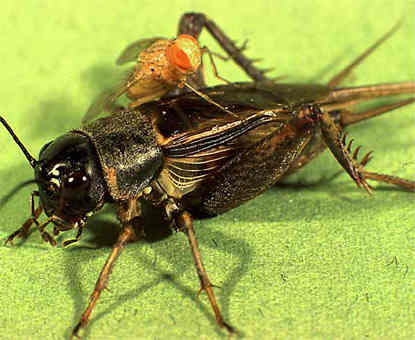
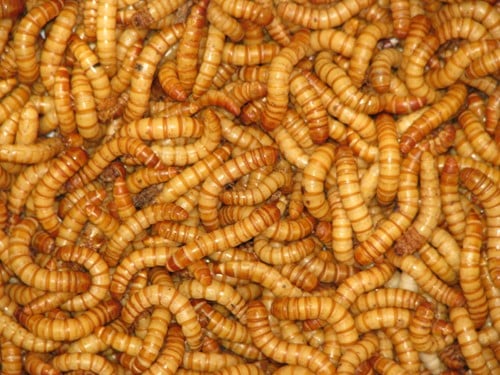
It is reported that over an average lifetime, a person will inadvertently consume a pound of insects. Those that deliberately eat them, a pound at a single sitting is an average meal. Insects get milled along with grains and corn and become part of the flour we eat. In unbleached flower, some of the tiny black specks one sees are small bits of milled insects. They wind up in candy, sometimes deliberately, and become part of the chocolate we eat. So even if we meticulously avoid eating bugs, we wind up eating them unbeknownst. Most insects it turns out are edible, but a few are especially palatable and sought after by some people. In some parts of the world, they are eaten whole and raw. They are low in fat, which is good for those who want to avoid fat. They are high in protein content as well. Perhaps, the best thing of all, is that they are incredibly easy to raise almost to the point of thriving on total neglect. They can even be raised in the average apartment without getting neighbor complaints, unless of course you're raising cockroaches or bedbugs.
When it comes to killing insects and butchering them, most people have no qualms whatsoever, whereas killing a hen, duck, cow or a pig that has become a pet becomes problematic, messy and gory. Hunting insects in the wild, is far easier than hunting for an elk, deer or a moose. It is easy to find a nest of ants or a rotting log filled with grubs. In the supermarket you are not likely to find insects for sale unless you are in Asia. But, in pet food stores you can obtain crickets and mealworms, which are both reported to be tasty. They are easy to raise, requiring only a small amount of grain to raise a suitable batch for stir frying and eating. Owing to their small size, they stir fry quickly and can be batch mixed and stir fried with bean sprouts, which also cook quickly. In the pet shop, crickets often are fed sawdust and shredded newsprint. So it you are going to use these, feed them a few days on grains to purge them of sawdust or newsprint taste.
Preparing beetles like crickets means you will have to rinse and pat dry and then remove the head, legs and wing covers as these are tough to eat. The legs and wing covers may get stuck between your teeth. Otherwise, the bugs are now ready to eat after a quick stir fry of a few minutes. They are the true fast food. They can also be baked en-masse for one to three hours on a low heat and then ground into a coarse flour consistency and added to any recipe including as a sprinkle on salads.
Honey dew ants are like their name implies. They make honey like substance for the colony and their abdomens are like honey drops. If you have access to these ants, you may want to harvest them for a natural sweetening agent. Some ants will gather and farm aphids which they milk like we milk cows. They live on the excretions of the aphids that they will deliberately place on plants in order to collect their “milk”. If you want to collect ants, the best part of the colony is the larvae which are the easiest to prepare and eat. You will have to dig these up and avoid getting bitten by the soldier ants that will defend their colony. The same can be said for termites, especially in the super colonies found in Africa. You will need to know which ants are the best as some are filled with formic acid which can cause severe acid burns. It follows that fire ants as they are called, are among some of the few species that are not edible. Venomous insects can pose similar problems. If the potential of insects as food interests you, perhaps the best approach is when you travel and try the foods of different cultures when they offer this either in a familial setting or restaurant.
References:
1. http://news.bbc.co.uk/2/hi/7735003.stm
2. http://justsixlegs.blogspot.com/2008/11/locust-swarms-plague-australia.html
3. http://www.entomon.net/insect-facts-and-information.shtml
A School for insect cookery
- EDIBLE INSECTS AND BUGS COURSES - Wild Food School
Edible Insects, Bugs & Entomophagy Courses - Wild Food School

